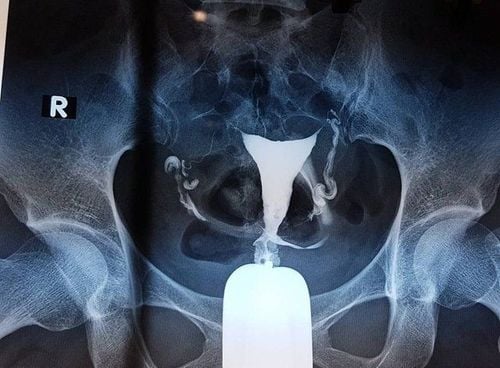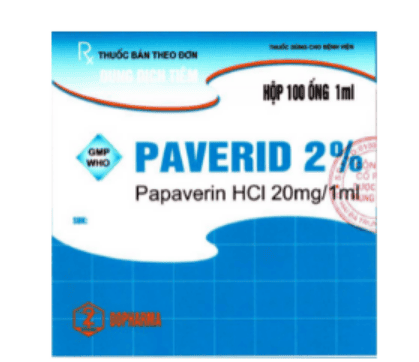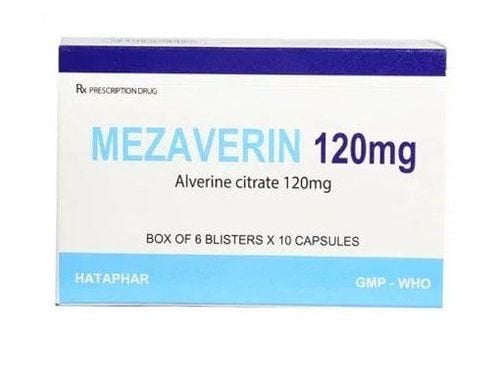This is an automatically translated article.
The article is professionally consulted with Master, Doctor Tong Diu Huong - Radiologist - Department of Diagnostic Imaging - Vinmec Nha Trang International General Hospital.To diagnose renal colic, the doctor will rely on clinical symptoms combined with imaging techniques such as X-ray, ultrasound, CT urology and ask the patient to do some tests. other necessary tests.
1. Causes of renal colic pain
Renal colic is a sudden and severe pain when the stone moves from the kidney to the ureter, thereby blocking it, leading to increased pressure in the kidney.There are many causes of renal colic , mainly due to kidney diseases . Some of the causes are ureteral stones, periureteral strictures, pyelonephritis, pyelonephritis, ureteral tumors or bladder tumors... However, most cases of renal colic are due to kidney stone pain.
Renal colic usually begins suddenly, but some cases of pain after a strenuous activity or are signaled by a symptom of low back pain, urinary retention,... The pain has characteristic signs. They are:
Pain from one side, the lumbar fossa and then spreading to the lower ribs, extending down to the groin area, the labia majora in women and the testicles in men. The pain lasts about 20-60 minutes, in some cases it can last from a few hours to several days. The patient feels pain like someone is squeezing the painful area, painful and sweaty. In addition to the above signs, people with kidney stone pain often have additional symptoms of abdominal distension, painful urination, blood in the urine, difficulty urinating and even being unable to urinate even though it is very urgent. In addition, the patient also had nausea, vomiting, and fever. People with renal colic, if not given emergency and timely treatment, can lead to serious complications for the kidney such as: dilatation or hydronephrosis - ureter, calyx rupture, renal pus stasis, acute renal failure,. .. or even death. Therefore, when having the above symptoms, patients need to go to the nearest medical facility for timely examination, diagnosis and treatment.

2. Diagnosis of renal colic pain by any medical technique?
To diagnose renal colic pain, the doctor will rely on the above clinical symptoms combined with imaging techniques such as X-ray, ultrasound, CT urology and ask the patient to do a test. other necessary tests. Specifically as follows:X-ray of the urinary system: This imaging technique can detect contrast stones. Therefore, this technique will be applied to patients with a history of contrast-enhanced stones. However, this technique is not indicated for pregnant women, patients of reproductive age need to do a pregnancy test before taking the scan. Urinary ultrasound: This method is most commonly used to detect urinary stones, as it can be applied to pregnant women. However, this technique has the disadvantage of not seeing small stones in the lowlands. Non-contrast CT urolithography: This technique is often used to determine the size and location of stones. And especially can replace ultrasound and X-ray. Urinalysis: With the method of total urinalysis, red blood cells will be found. However, ureteral stones cannot be ruled out if red blood cells are not present.
3. Treatment of renal colic pain
The main treatment for renal colic pain is to relieve pain and clear the blocked urinary tract. Depending on the condition, the doctor will prescribe pain relievers, anti-smooth muscle spasms, anti-inflammatory, muscle relaxants and antibiotics. However, in order to completely treat renal colic and not to recur, the patient needs to treat kidney diseases such as kidney stones, ureteral stones, urinary tumors,... using surgical methods such as lithotripsy for small stones, laparoscopic stone removal or open surgery for large and complex stones.Patients need to go to a reputable hospital to conduct examination and treatment immediately when experiencing renal colic. Currently, Vinmec International General Hospital is one of the leading prestigious hospitals in the country, trusted by a large number of patients for medical examination and treatment. Not only the physical system, modern equipment: 6 ultrasound rooms, 4 DR X-ray rooms (1 full-axis machine, 1 light machine, 1 general machine and 1 mammography machine) , 2 DR portable X-ray machines, 2 multi-row CT scanner rooms (1 128 rows and 1 16 arrays), 2 Magnetic resonance imaging rooms (1 3 Tesla and 1 1.5 Tesla), 1 room for 2 levels of interventional angiography and 1 room to measure bone mineral density.... Vinmec is also the place to gather a team of experienced doctors and nurses who will greatly assist in diagnosis and detection. early signs of abnormality in the patient's body. In particular, with a space designed according to 5-star hotel standards, Vinmec ensures to bring the patient the most comfort, friendliness and peace of mind.
Please dial HOTLINE for more information or register for an appointment HERE. Download MyVinmec app to make appointments faster and to manage your bookings easily.














